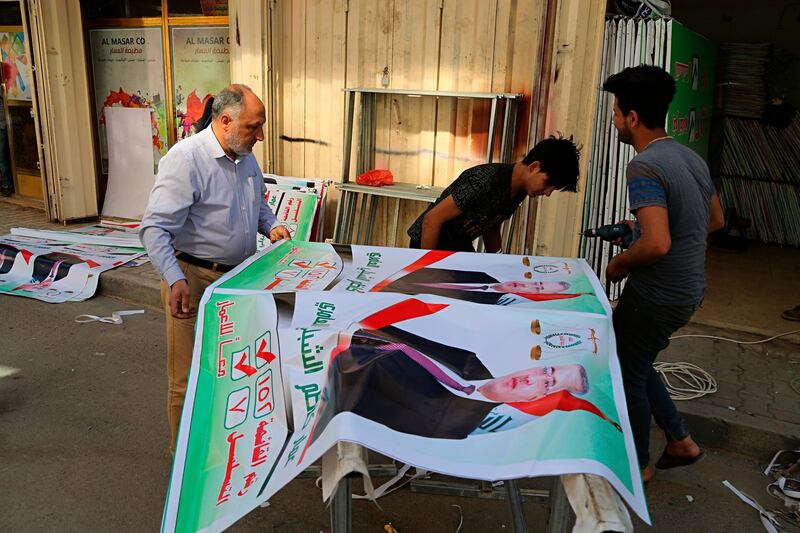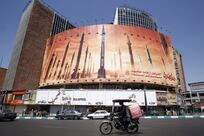The overthrow of Iraqi president Saddam Hussein 15 years ago was supposed to herald a new era of political and economic reform for a country that had suffered under his tyrannical rule for decades.
Instead, it ended up plunging the country into the most prolonged period of violence and destruction in the country’s history, a tragic episode that only now looks to be drawing to a close as Iraqis prepare for next month’s elections.
It did not have to be like this. As someone who argued in favour of Saddam’s removal, I believe the recent history of Iraq could have been a very different story if the post-Saddam administration of the country had been handled differently.
My support for Saddam's removal dated back to the First Gulf War which I covered as a journalist attached to the British Desert Rats. Having seen for myself the devastation Saddam's forces had inflicted on Kuwait during Iraq's six-month occupation of the Gulf state, I believed Saddam should be held to account for his conduct.
Saddam, though, completely ignored the terms of the ceasefire agreement agreed through the UN and embarked on a campaign of defiance against the West, thwarting efforts by UN weapons inspectors to investigate his stockpiles of weapons of mass destruction (which is the real reason why western intelligence on Iraq’s WMD was so flawed) while regularly firing missiles at American and British warplanes protecting the no-fly zones in over northern and southern Iraq.
The no fly-zones, it should be remembered, had been established to protect the Kurds and Iraqi Shias from Saddam’s murderous designs and western attempts to patrol them meant that the US and its allies were, in effect, involved in a proxy war with Baghdad for much of the 1990s.
Moreover, western-backed attempts, mainly involving the CIA and MI6, to remove Saddam involving Iraqi opposition groups failed because of the ferocious effectiveness of Saddam’s muhabharat, who routinely arrested, tortured and executed anyone suspected of plotting against the regime. The Iraqi people therefore had no chance of getting rid of Saddam by themselves.
So much of this important period in the modern history of Iraq and the build-up to Saddam’s overthrow in April 2003 is now forgotten because of the many controversies that have raged over the Bush administration’s decision to invade Iraq.
But they are important, because they demonstrate that the vast majority of Iraqis were delighted to see the back of Saddam and his psychotic sons, Uday and Qusay, as was demonstrated during the jubilant scenes in Baghdad when Saddam's statue was torn down in Firdos Square in April 2003.
I arrived in Baghdad shortly afterwards (having been banned by Saddam since 1990) and experienced for myself the general mood of relief among ordinary Iraqis at the dictator’s demise. But, by the same token, while the Iraqi people were glad to see the back of Saddam, they were none-too-pleased at the prospect of being occupied by a foreign army. If it had been possible to conduct an opinion poll during that turbulent time, I reckon more than 90 per cent of Iraqis supported Saddam’s overthrow. And I imagine the same percentage would have opposed the country’s prolonged occupation by a foreign army.
And this, of course, is where the military campaign to remove Saddam took a disastrous turn.
For rather than allowing the Iraqi people to decide their own fate, the small band of American neo-conservative ideologues who seized control of American policymaking at that time had other plans, including the disastrous de-Baathification programme, which was not only implemented against the will of the Iraqi people but left the country unable to protect itself from the sectarian violence that subsequently flared.
Consequently, hundreds of thousands of Iraqis have been killed or injured by the appalling violence of the last decade or so and millions more forced to flee their homes.
Had the US-led coalition not made these catastrophic misjudgments and not overstayed its welcome, it is possible that much of this misery might have been avoided.
Instead, Iraq has suffered years of bloodshed and hardship, a period that only now looks as though it might be drawing to a close.
When chronicling the past 15 years, I believe two key factors need to be taken into account.
The first is the Bush administration’s admission – albeit far too belatedly – that its initial policy towards Iraq was a total disaster and the decision to launch the military “surge” masterminded by US General David Petraeus to defeat the Al Qaeda-affiliated groups responsible for causing so much of the carnage in Iraq.
The second is the Obama administration’s decision to turn its back on Iraq in 2011, thereby helping to create the conditions for a fresh bout of sectarian violence, culminating in the capture of large swathes of territory by the Islamic State of Iraq and the Levant (ISIL) in the summer of 2014.
Thanks to the efforts of yet another US-led military intervention – this time working in conjunction with Iraqi forces – ISIL has been defeated and the country is now looking at ways to rebuild and unite after more than a decade of bitter strife.
Indeed, one of the few positives to emerge from this awful saga has been the introduction of democratic government which, while not perfect, nonetheless gives ordinary Iraqis a say in how the country is run – a fundamental privilege that was denied to them during Saddam’s tyranny.
Next month will be the third time Iraqis have been to the polls since Saddam's demise and there are hopes that, this time, they will produce a government that is serious about political and economic reform.
But for that to happen will depend to some extent on whether Iraq's current generation of politicians are able to curb the malign influence Iran continues to exercise over Iraq's body politic. Work also needs to be done of rehabilitating the Sunni communities who feel disenfranchised since Saddam's overthrow, and managing the delicate issue of Kurdish demands for full independence.
For it is only when these vital issues have been properly and satisfactorily addressed that post-Saddam Iraq can start to look forward to the better, more prosperous and peaceful future the country deserves.
Con Coughlin is the Daily Telegraph’s defence and foreign affairs editor and the author of the New York Times bestseller Saddam, The Secret Life





